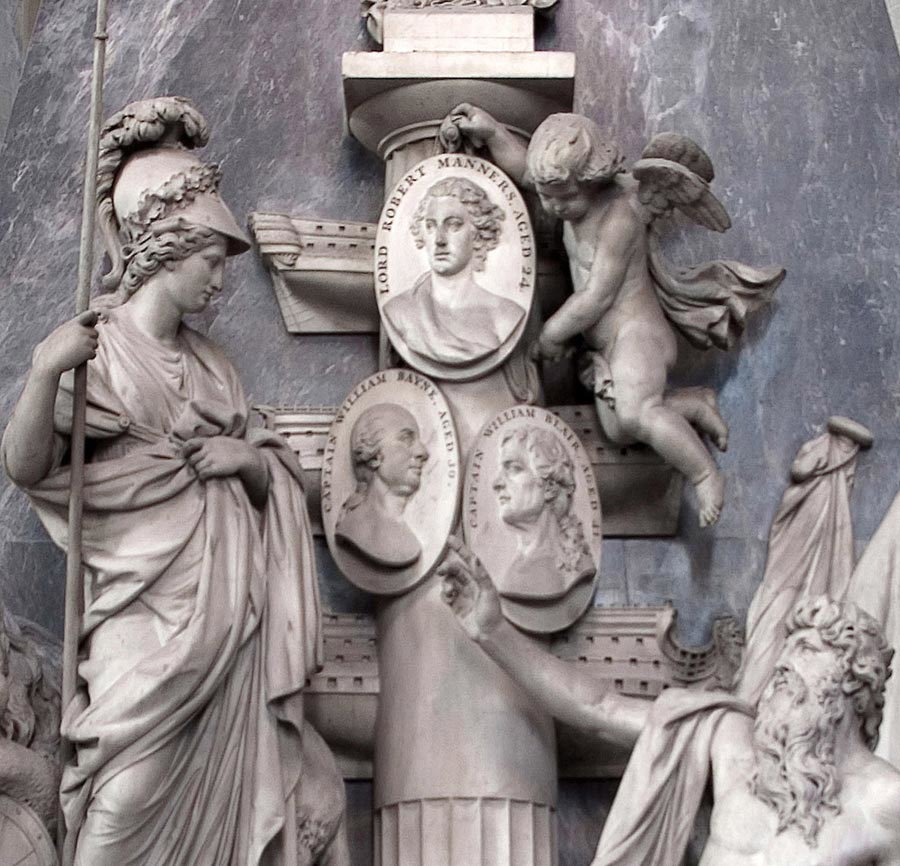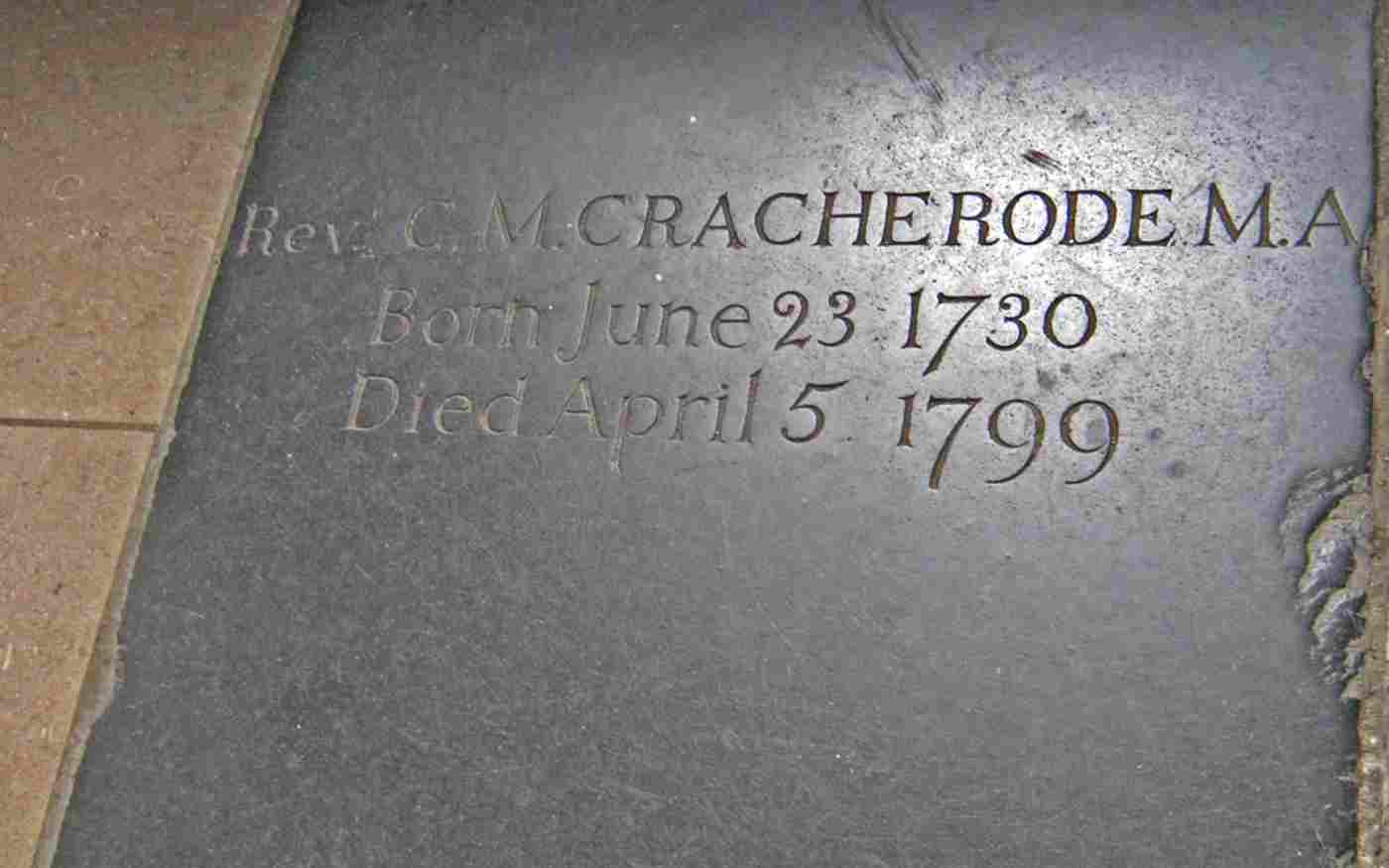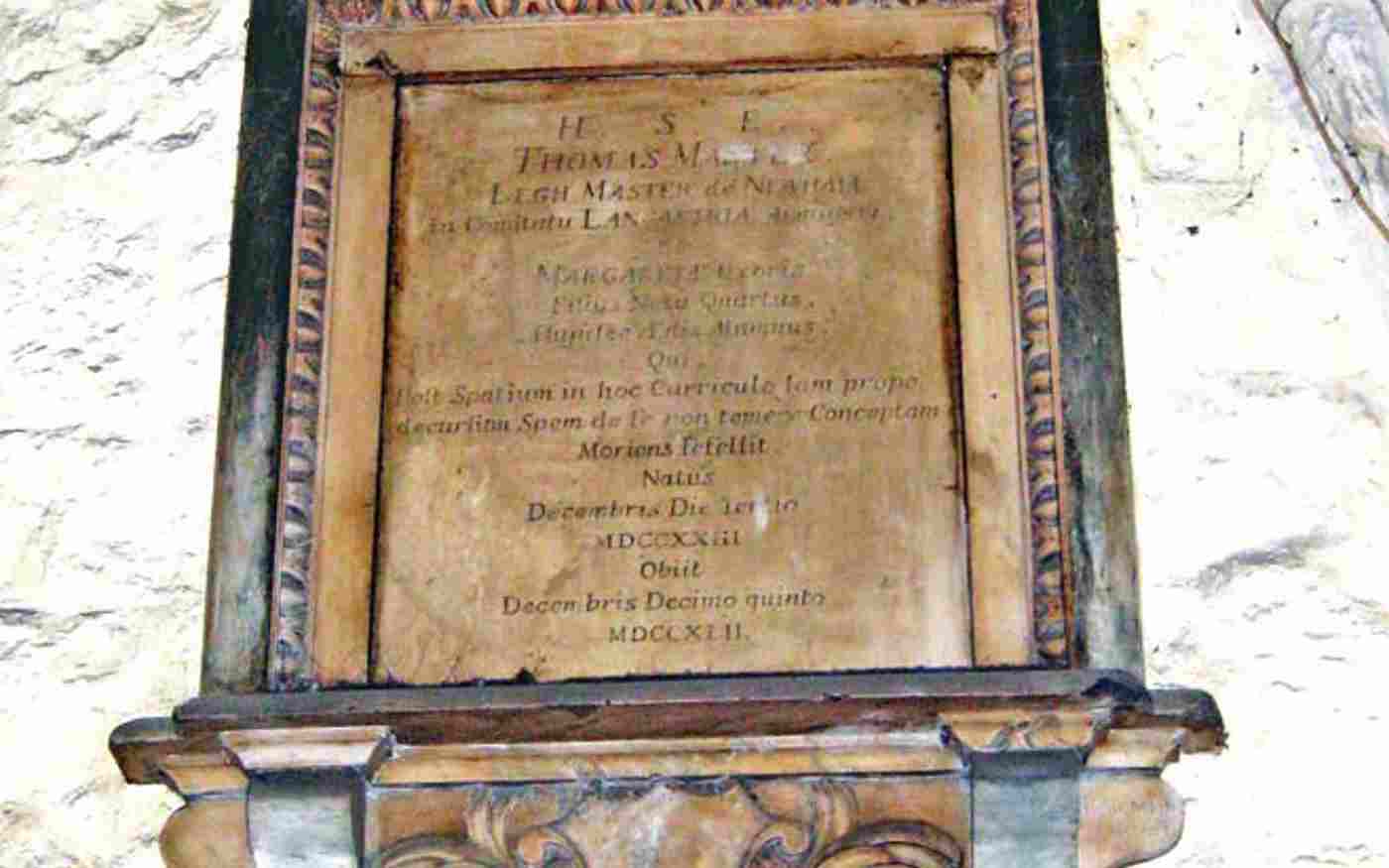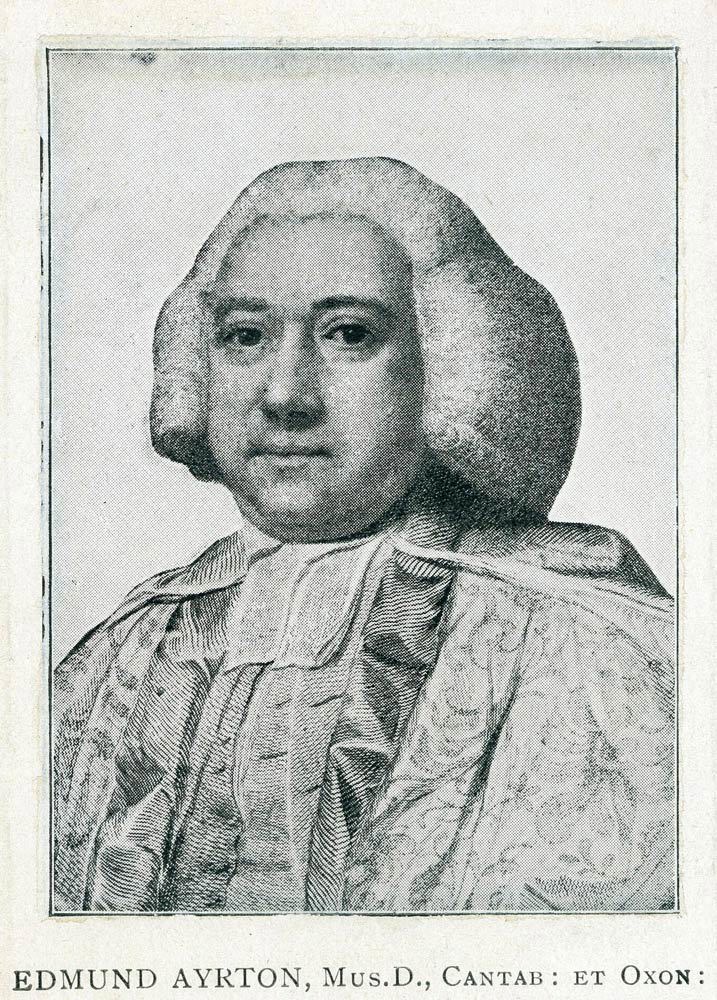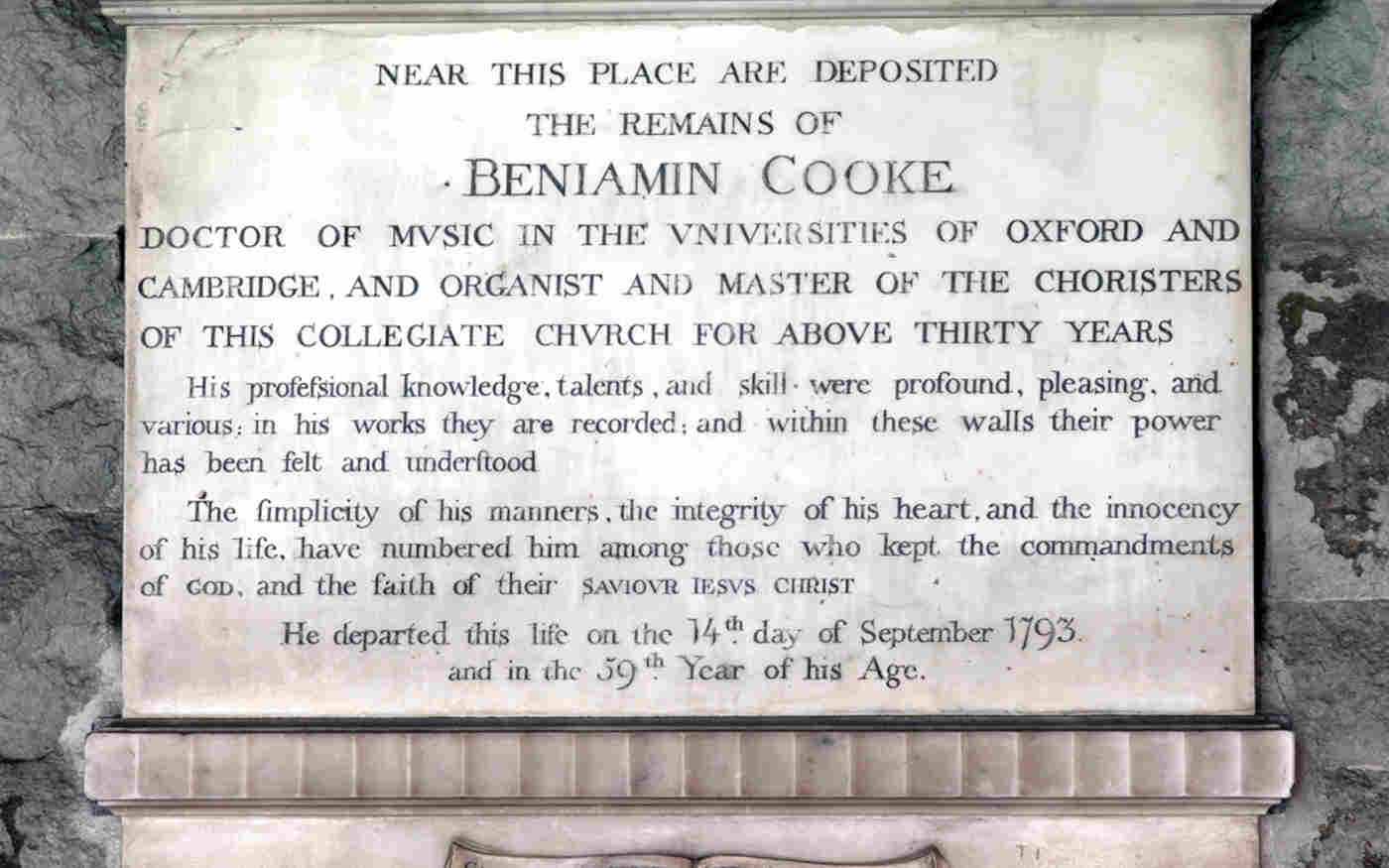James Cook
A memorial to Captain James Cook, Sir Francis Drake and Sir Francis Chichester was unveiled in the south cloister of Westminster Abbey on 4th October 1979 (known as the Navigators' memorial). All three men had circumnavigated the globe by sea in different eras.
The memorial was commissioned by the Dean and Chapter of Westminster, for the 200th anniversary of his death, with money raised through private funds and an appeal led by Sir Edward Heath, former Prime Minister and also a sailor, who performed the unveiling. He also gave the address.
The mosaic of coloured marbles - Tinos for the background, Lapis Lazuli for the sea, Napoleon for the land areas and Golden Travertine for the ships - within the oval memorial shows a map of the world, with lines tracing the routes taken and with the three ships shown.
The general design was by the Abbey Surveyor Peter Foster and Eric Fraser designed the globe with the ships. Within the Portland stone border are depicted doves, dolphins and an oak and laurel branch, carved by Arthur Ayres. The Latin inscription around the edge can be translated:
Circumnavigators of the world, Sir Francis Drake, James Cook, Sir Francis Chichester
His life
James Cook, explorer, was born on 27th October 1728 at Marton in Cleveland in Yorkshire, a son of James, a farm labourer, and Grace (Pace). He received schooling at Great Ayton and worked for a grocer in the village of Staithes. Later apprenticed to a Whitby ship owner, he learnt his seamanship in the North Sea. In 1755 he joined the navy and served in North American waters. He charted part of the St Lawrence river which enabled the British fleet to get up to Quebec.
He married Elizabeth Batts in 1762 and had six children. But only three survived to adulthood and none married.
He carried out surveying work in Newfoundland, and for the Royal Society he undertook a voyage to observe the transit of Venus at Tahiti in the Endeavour. He charted the coastline of New Zealand, circumnavigated the Antarctic. and discovered the Hawaiian islands. While surveying the coast of Australia he discovered Botany Bay, and in the Resolution he undertook two voyages and circumnavigated the world. He was made a Fellow of the Royal Society.
While wintering in Hawaii, endeavouring to find a north-west passage, he was killed by the local inhabitants and his bones were buried at sea on 21st February 1779 in Kealakekua Bay.
Further Reading
Oxford Dictionary of National Biography 2004
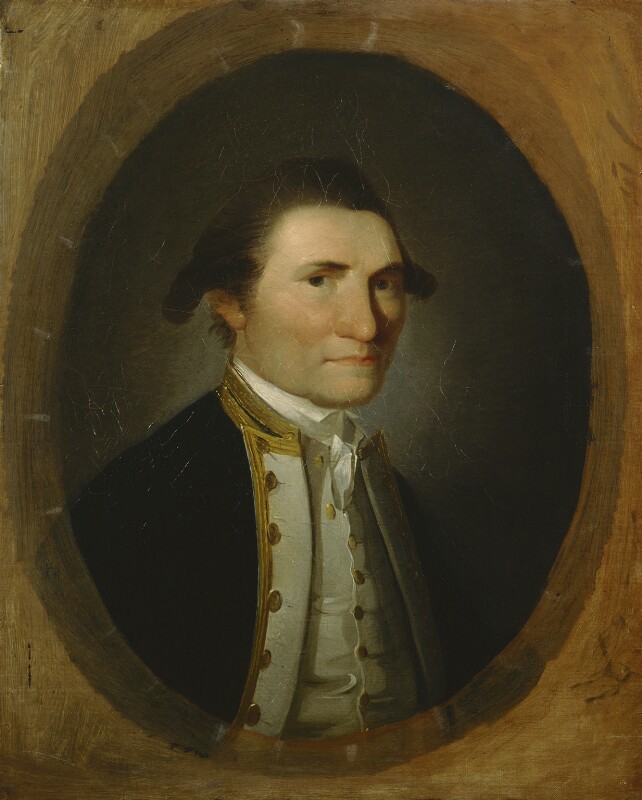
© National Portrait Gallery, London [Creative Commons CC BY-NC-ND 3.0]
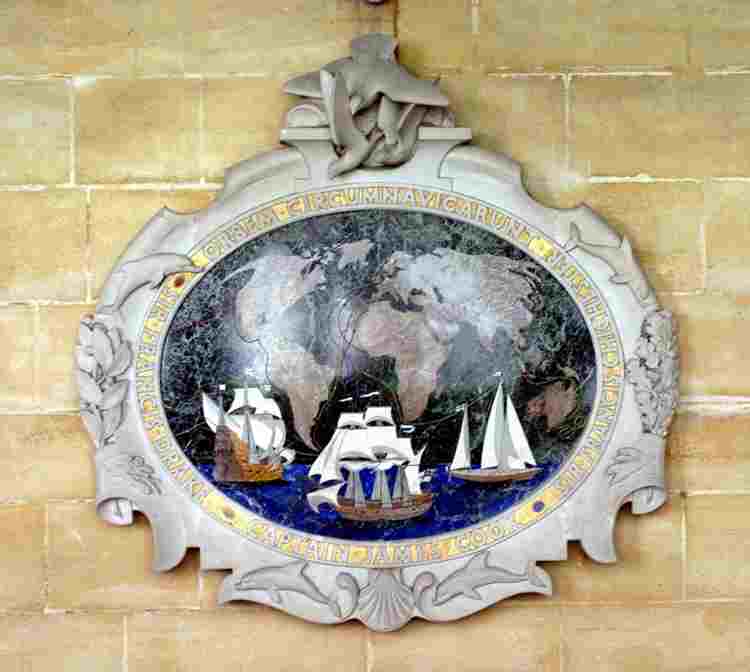
This image can be purchased from Westminster Abbey Library
Image © 2025 Dean and Chapter of Westminster
